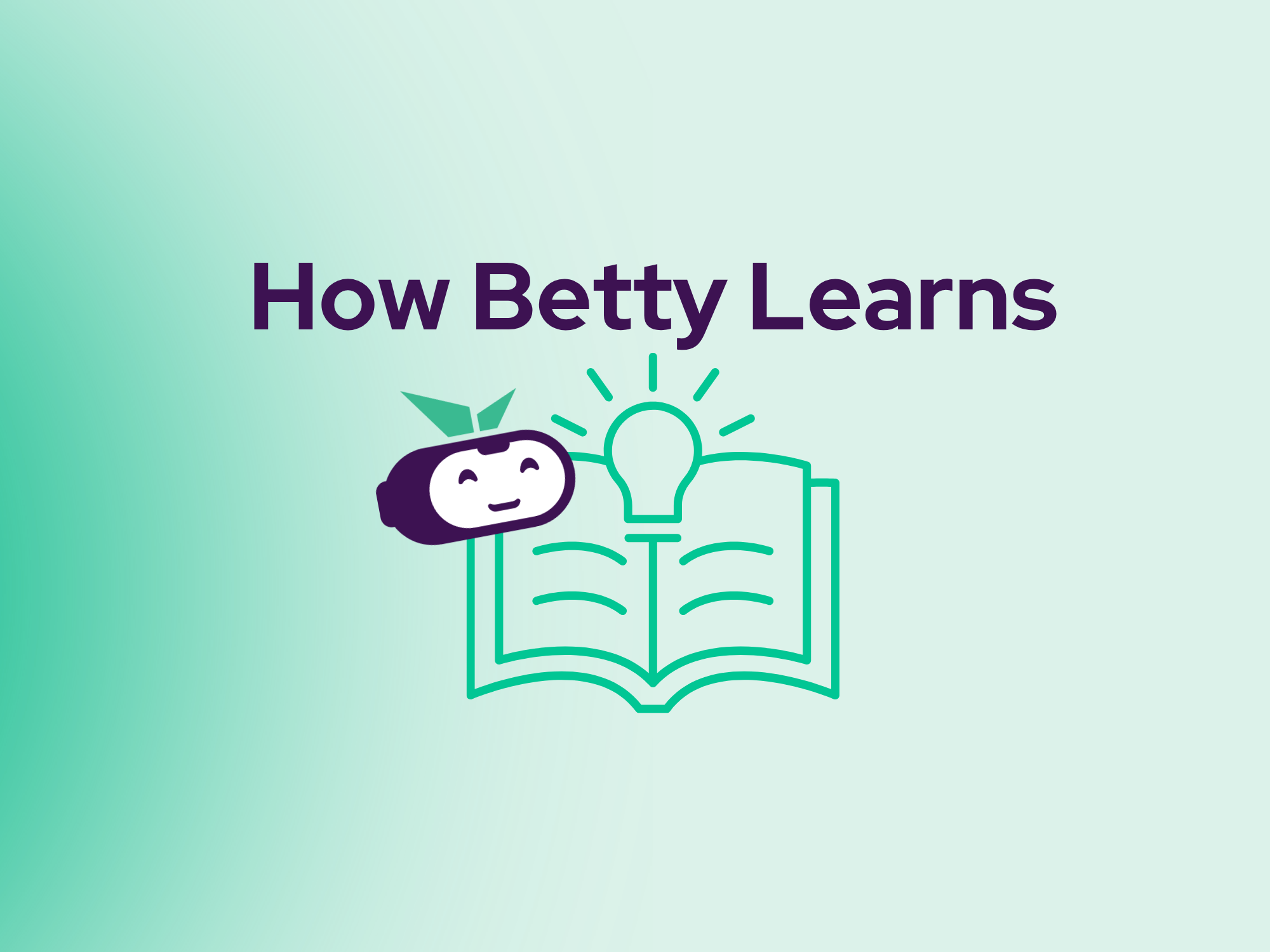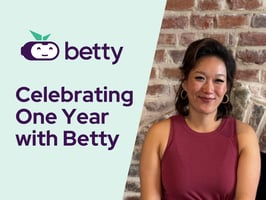Have you considered having your own Betty to help members easily navigate the wealth of information and content you make available to them? If so, you might be also wondering: “How will Betty be able to learn all of our content?”
Fair! But whether that content consists of articles, learning centers, video playlists, document libraries or your entire website(s) — this post is intended to bring clarity, confidence and a bit of guidance to what may otherwise seems like a daunting task.
Our goal is simple: meet you where your content already lives and ensure any ongoing content updates and additions are easily included.
So let’s start with some good news: we have multiple, well-tested paths to achieve this goal and make it simple and straight-forward for you and your team, regardless of where you content lives. The best path, or ingestion method as we call it, for your content depends on where that information lives and how often it gets added to, or updated.
The guide below walks through the main options and includes some more information on each choice and when they usually fit the best. While you read through the below points, keep your different types of content or content sources in mind, and if something doesn’t feel like an immediate fit don’t worry, we’re here to help you figure it out and guide you and your team through the process!
The Easiest Path for Most Teams: Your CMS API (or RSS)
Why start with API? APIs and RSS feeds automate the heavy lifting. Once connected, new and updated content flows in with minimal ongoing work from you. For that reason, this is our preferred approach, and usually our customers’ too!
“Wait… we already have an API?!”
If you’re on any modern CMS, you probably do, and may not even know it. And if you are using Wordpress, chances are very high that you can test this right now! Try this quick check: https://www.[yourdomain.org]/wp-json/wp/v2/pages. (Be sure to replace the “www.” if that doesn’t apply for your site)
If that returns JSON in your browser window, congrats—your site is already speaking Betty’s preferred language and she can quickly start to learn from it directly. Most modern CMS platforms (WordPress, Drupal, Hubspot, Contentful, and many others) expose API content feeds right out of the box. And RSS feeds are usually even more straightforward, as nearly all CMS have the ability to easily (no-code!) expose RSS feeds for various types of content that can be updated daily, or even more frequently if desired.
What to expect on timing & effort (typical):
- API feeds:
- Setup: Very low to medium (depending on CMS) setup effort from customer team, and ~2 weeks for Betty once we have the API details.
- Ongoing: Very low ongoing effort as Betty will automatically read through your feed daily, adding new content, and updating for any edits or changes.
- RSS feeds:
- Setup: Low setup effort from customer team, ~2–3 days for Betty once we have the feed.
- Ongoing: Low ongoing effort as Betty auto-ingests new content daily.
When an API/RSS Feed Isn’t an Option, You’ve Still Got Great Choices
Think of these as the “no-drama” routes—quick to set up, pragmatic to maintain.
1. Website Crawler (for public, frequently updated sections): Perfect for resource libraries, news hubs, or any section with a clean, shared (or nested) URL structure (e.g., [yourdomain.org]/resources/ContentPages). We schedule crawls to ingest new pages and pick up changes on a cadence you’re comfortable with.- Setup: Low effort from customer team; usually 1–2 days for Betty to learn once crawlable sections of the site have been identified.
- Ongoing: Low effort from customer team; Automatic ingestion of new additions to the URL structure, including updates on the agreed frequency.
- Notes: Content must be publicly accessible (no login required) & full public-site crawls can be supported under specific considerations (page count, frequency, and others)
2. Manual URL Upload (best for stable page structures with infrequent updates): Ideal for “About,” program descriptions, membership details—content that changes rarely. It’s fast to start, and you ping us when new pages should be added. Self-service features are being launched in Q4 2025 to allow customers to manage this type of content themselves.
- Setup: Low to medium (depends on volume); typically 1–2 days. Ongoing effort is manual when pages change.
- Ongoing: Low to moderate, depending on volume; Updates can be automatically ingested, but new page links must be added via Betty’s UI
3. SFTP Upload (for larger document repositories): Got lots of PDFs, Word docs, or manuals—especially items not on your public site? SFTP lets us sync in bulk on a schedule and mirror your structure.
- Setup: Very low to moderate from customer team; Betty team will setup the SFTP and folder structure, customer teams just drop in the documents.
- Ongoing: Low, just let us know when you need to delete or update a file
- Notes: This potentially requires some mapping if these uploaded files should direct to URLs
4. Direct Document Transfer (for a small set of files): If you only have a handful of documents, just send them. We’ll ingest them on our side.
- Setup: low; typically 1–2 days. You let us know when something needs adding or replacing.
5. Direct Connection to Google Drive or Sharepoint: We also offer a connection directly to specific Google Drive or Sharepoint folders, connecting to your files right where they currently live. This does often require some additional organization to ensure that Betty can focus on text-based files and content, but whose shared drive doesn’t need a little TLC anyway, right?
Quick “Choose-Your-Path” Guide
- Does your content source have an API or RSS? Use it. It’s the most automated and scalable option. Build it once, then hands off going forward!
- Public, frequently updated and segregated web sections? Our focused crawler keeps things fresh on a schedule.
- Public, static pages? Manual URL upload for fast, one-and-done setup.
- Not on the web or behind login? SFTP for big batches; direct transfer for smaller sets.
Do you have a situation that doesn’t quite fit any of this? No worries! We will work with your team to discuss secure access methods and the right training approach that fits.
What We’ll Handle vs. What We’ll Ask From You
We keep your lift light. Here’s the usual split, in plain English:
- We handle: Ingestion of your feed, crawl configuration, content mapping guidance, automated syncs where ever possible to keep ongoing effort minimal to none.
- You provide: the API/RSS details (if available), time to discuss your website structure, document drops for SFTP/direct, transcripts for videos and credentials for any restricted content.
Typical Timelines at a Glance
- API: ~2 weeks from docs/credentials; then it mostly runs itself.
- RSS: ~2–3 days from feed; may need periodic update handling.
- Crawler: ~1–2 days once sections are defined; scheduled recrawls keep it fresh.
- Manual URL Upload: ~1–2 days from URL list; you let us know when to add more.
- SFTP / Direct Docs: 1–2 days to start after files arrive (SFTP time varies by volume).
A Handy Prep Checklist (to speed everything up)
- Identify 3–5 key content sources Betty should learn from.
- For each source, check for API or RSS and share links/docs if they exist.
- Flag frequently updated site areas with shared URL patterns (good for crawling).
- Gather static page URLs for one-time/manual upload.
- Organize documents (folder names, file titles) for SFTP or direct transfer.
- Note any login requirements and we’ll propose secure methods.
Our promise: we’ll recommend the lowest-effort, highest-reliability path for your mix of content—and we’ll set it up with you. If you’re API-ready, fantastic. If not, you still have simple, fast options. Think of us as your pit crew: you bring the content, we tune the engine and get it fueled up, and you and your customers get to race the car!
What now?
- Try the quick WordPress API check above.
- Or send us your top 3–5 sources, and we’ll map the fastest path together.
- Prefer a walkthrough? We’re happy to hop on a short working session to confirm the right approach and get your ingestion plan live.
We are SO grateful to our customers and content teams who’ve helped us refine these paths—they’re the reason onboarding with Betty keeps getting smoother. If you’re ready, we’re ready.
.png?width=173&height=70&name=Betty_RGB%201%20(1).png)



